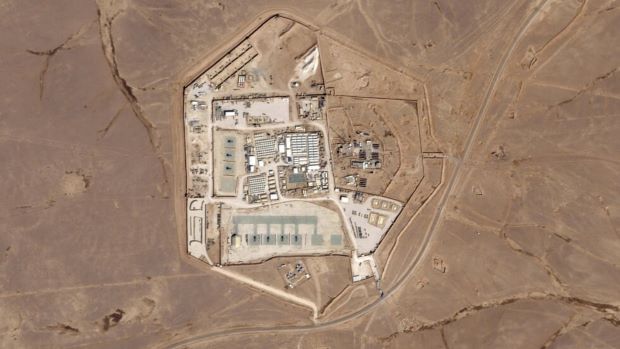Biden says US response to deadly drone strike in Jordan has been decided
By Eric Schmitt
WASHINGTON — President Joe Biden said Tuesday (30) that he had decided on a US response to the drone attack on a remote outpost in Jordan on Sunday (28) that killed three American soldiers and injured more than 40 others, leaving unstated what that decision was.
Asked by reporters outside the White House whether he had decided on a response to the lethal attack, Biden said, “Yes” but declined to provide further details.
John F. Kirby, a National Security Council spokesperson, refused to elaborate on Biden’s remarks other than to say it was “very possible” that the United States would carry out “a tiered approach” — “not just a single action, but potentially multiple actions” over a period of time.
Biden administration officials have blamed an explosives-laden drone, most likely launched by an Iran-backed militia in Iraq, for the attack — the most deadly of the more than 160 militia attacks the Pentagon says US forces have come under in the region since the start of the war between Israel and Hamas in the Gaza Strip nearly four months ago.
Biden has vowed to retaliate and has met twice this week with his national security aides to discuss targets in Syria, Iraq and Iran. He could order strikes on Iran’s proxy forces, a major escalation of the whack-a-mole attacks the United States has conducted in recent weeks in Syria, Iraq and Yemen.
Or Biden could opt to attack the Iranian suppliers of drones and missiles, perhaps including inside Iranian territory, which poses a much higher risk. His first targets could well be members of the Revolutionary Guard, many of whom are based in Syria and Iraq, officials said.
Biden emphasized Tuesday that he was seeking to avert a broader regional conflict, telling reporters as he prepared to depart for a fundraising swing in southern Florida: “I don’t think we need a wider war in the Middle East. That’s not what I’m looking for.”
Analysts at the Pentagon and its Central Command continued their investigation Tuesday into how the drone evaded air defences at the small resupply base, Tower 22, in northeast Jordan, near its borders with Iraq and Syria.
A major contributing factor was that the enemy drone was mistaken for an American surveillance drone returning to the remote resupply base, and air defences failed to shoot it down before it slammed into a living quarters early Sunday while troops were still asleep in their beds, US officials said Monday (29).
“This could very well have been a combat identification problem,” said Thomas Karako, who directs the missile defence project at the Centre for Strategic and International Studies in Washington.
About 350 Army and Air Force personnel are deployed to the Tower 22 outpost. It serves as a logistics and resupply hub for Al Tanf garrison in nearby southeastern Syria, where US troops work with local Syrian partners to fight remnants of the Islamic State group.
The Pentagon on Monday identified the dead soldiers as Sgt. William Jerome Rivers, 46, of Carrollton, Georgia; Specialist Kennedy Ladon Sanders, 24, of Waycross, Georgia; and Specialist Breonna Alexsondria Moffett, 23, of Savannah, Georgia. The three were assigned to the 718th Engineer Company, 926th Engineer Battalion, and 926th Engineer Brigade, an Army Reserve unit based in Fort Moore, Georgia.
The US Army Reserve said Tuesday that it had posthumously promoted Sanders and Moffett to the rank of sergeant “in recognition of their exceptional courage, dedication and leadership.”
Biden and Defence Secretary Lloyd Austin are expected to receive the remains of the three soldiers Friday (Feb 2) at Dover Air Force, Delaware.
–New York Times



Comments are closed, but trackbacks and pingbacks are open.